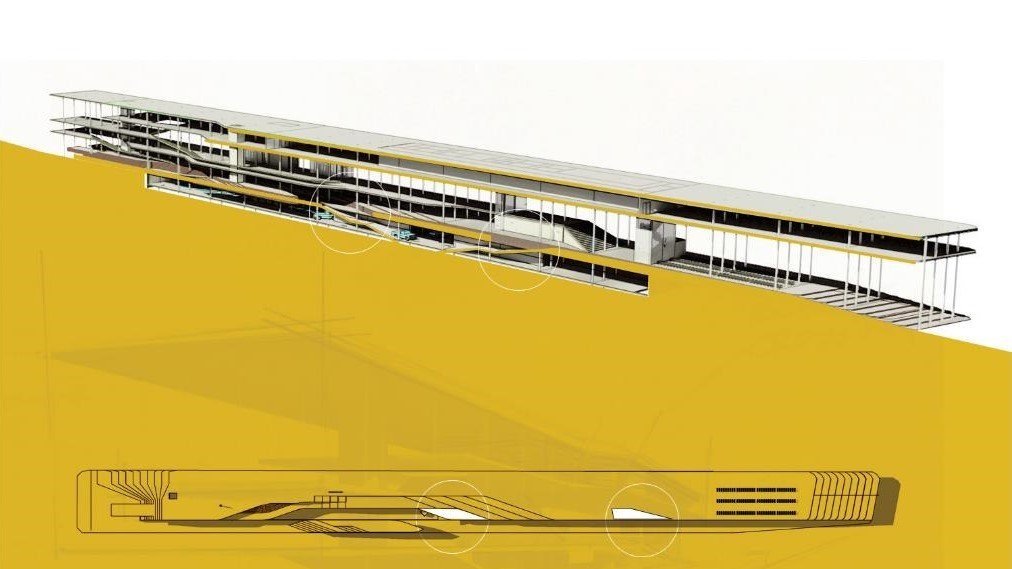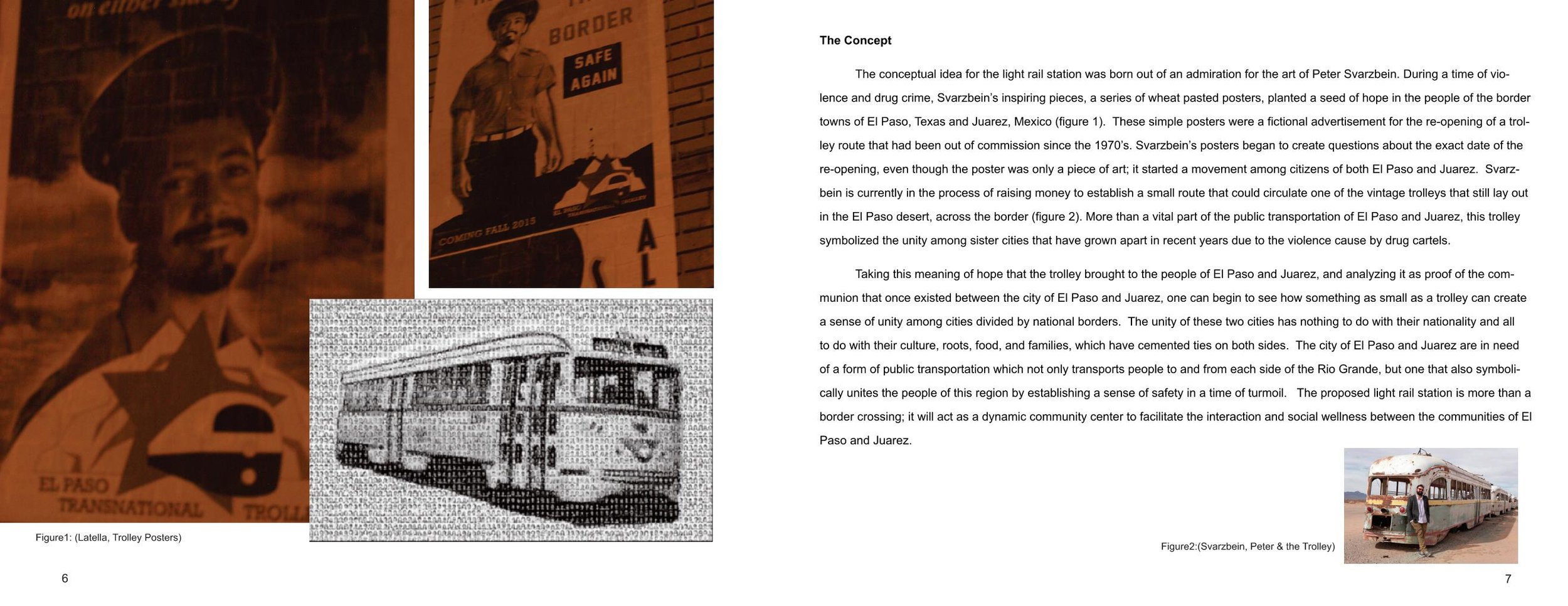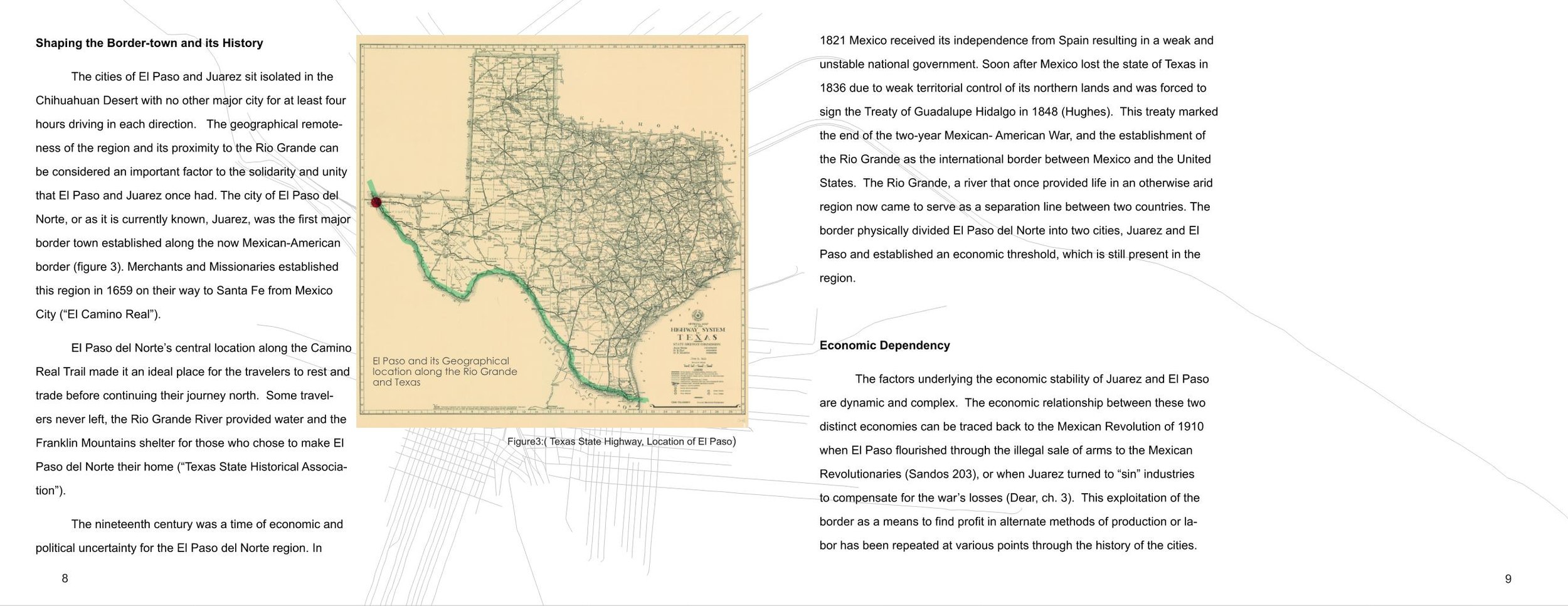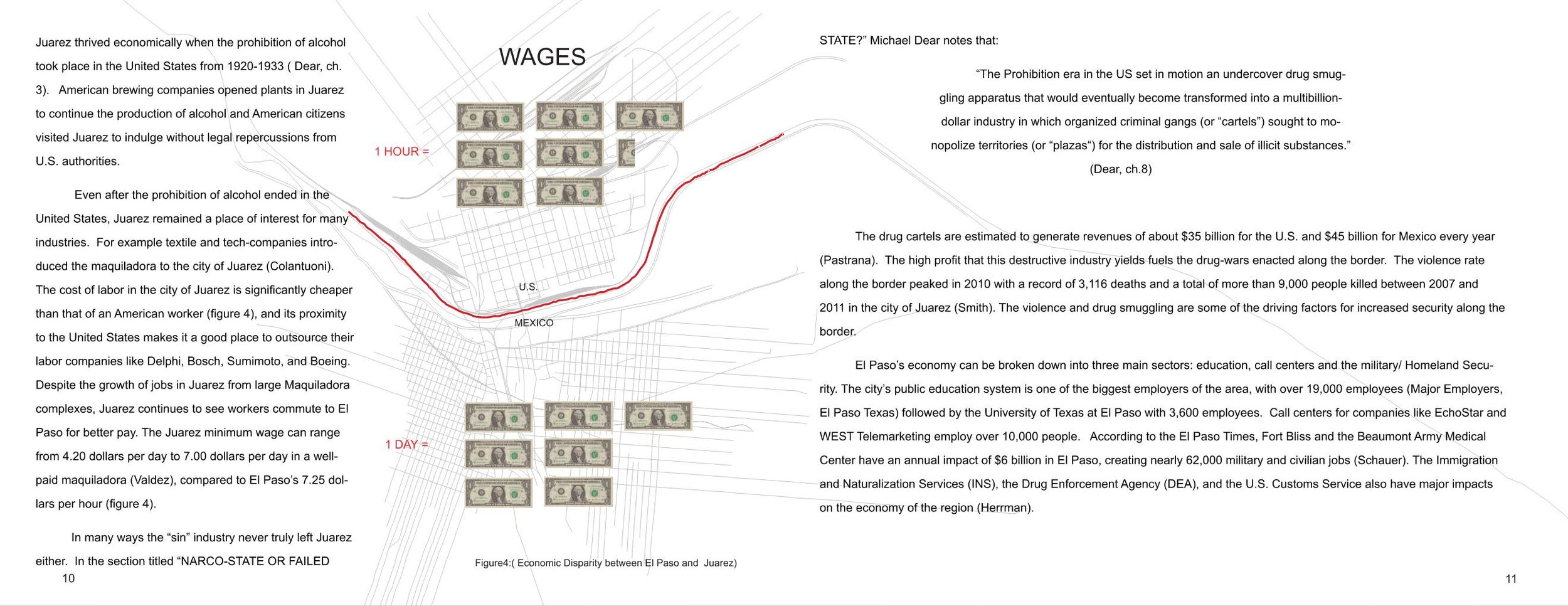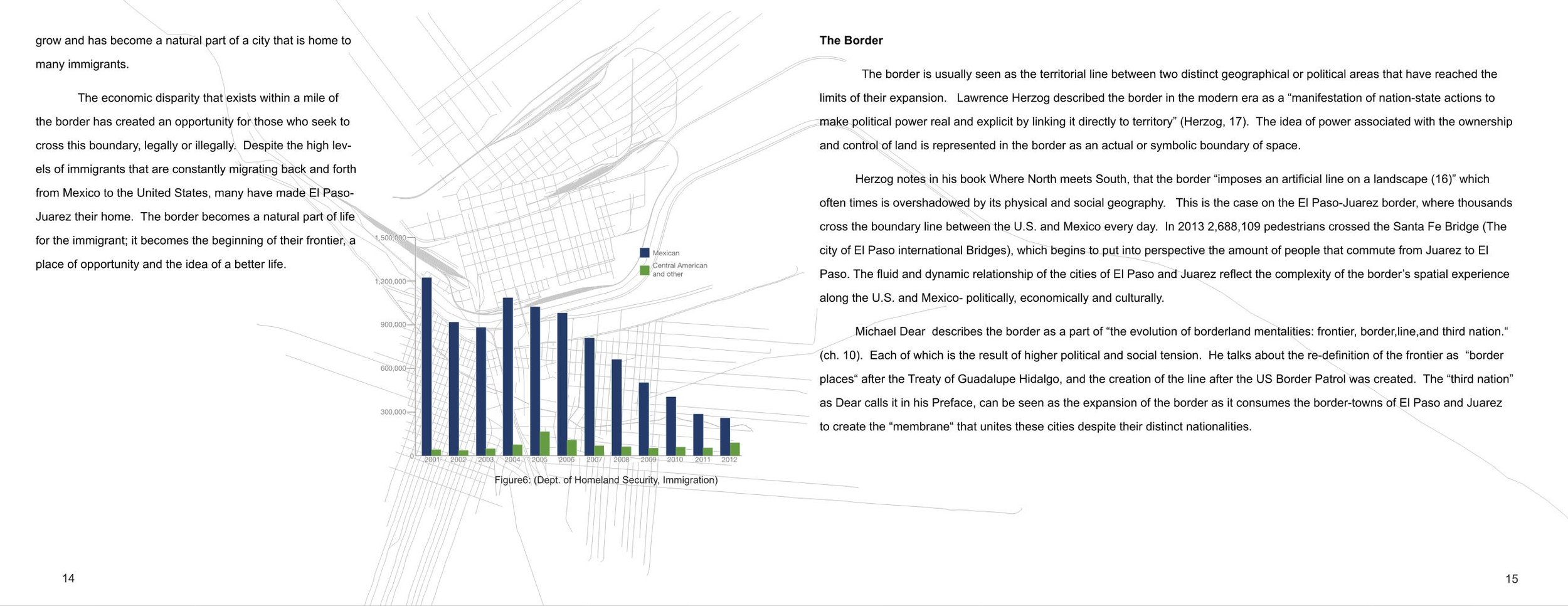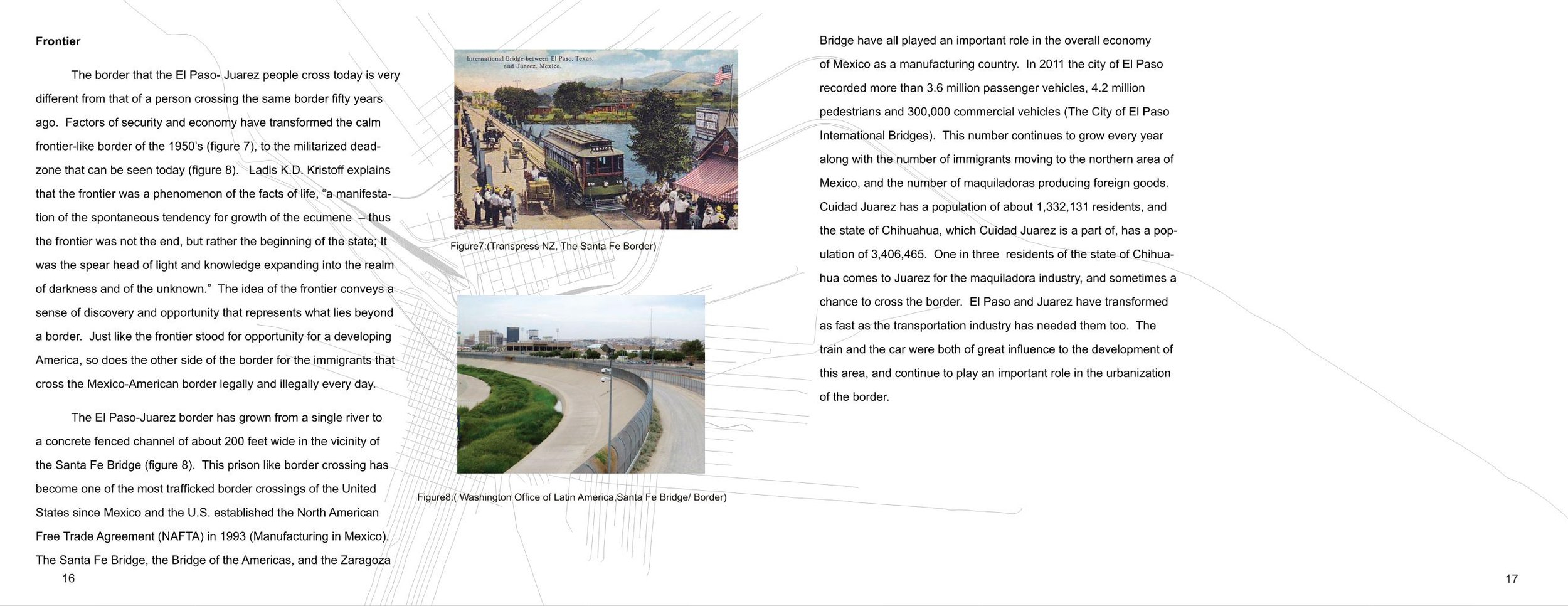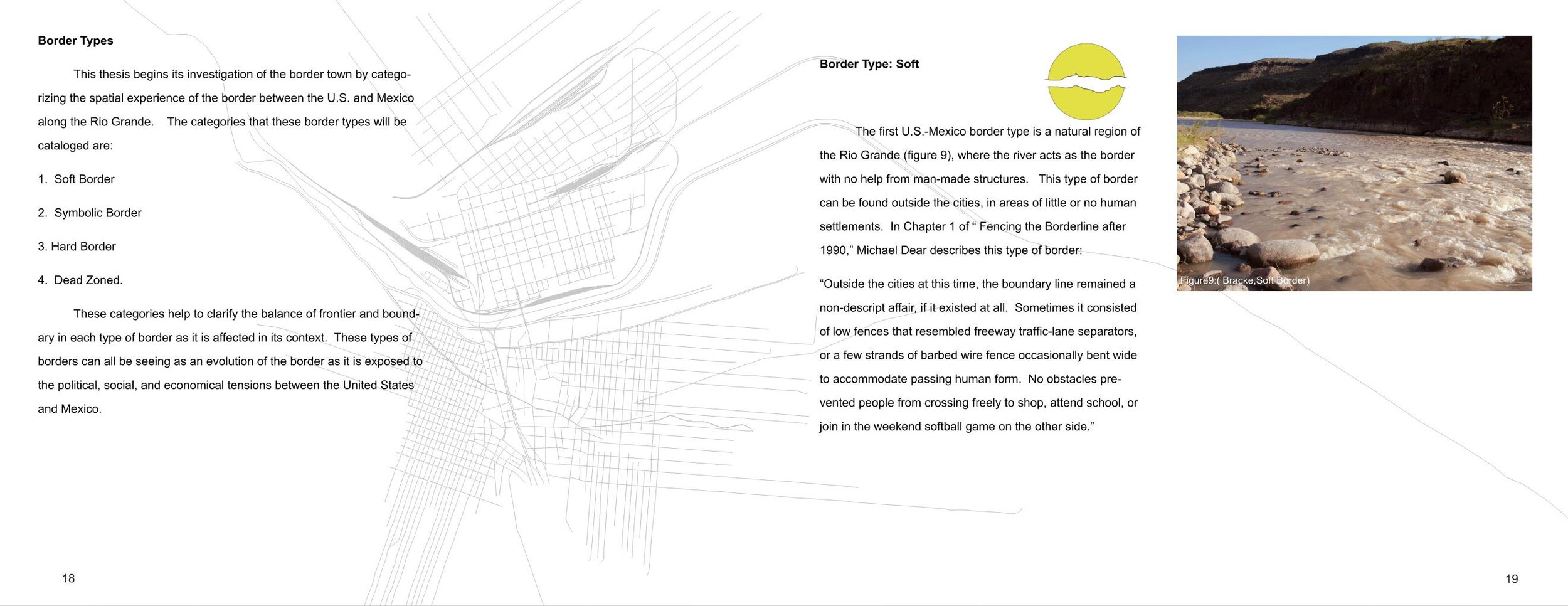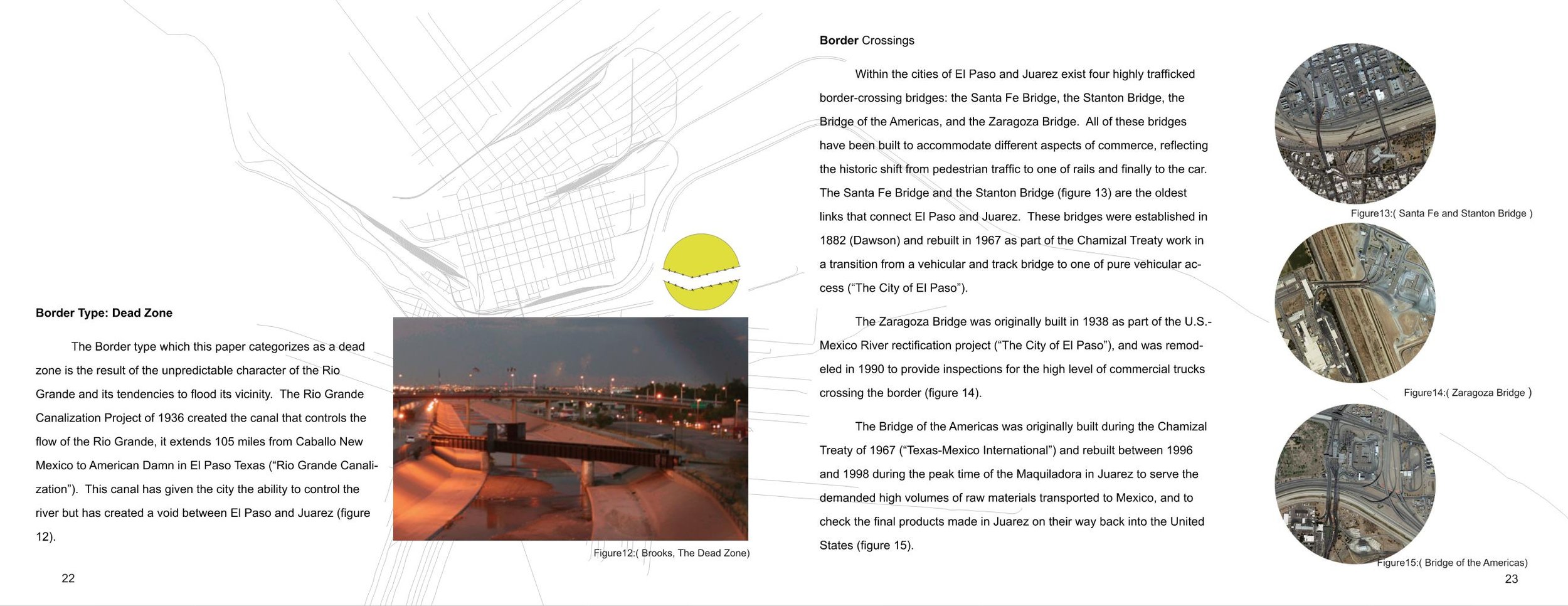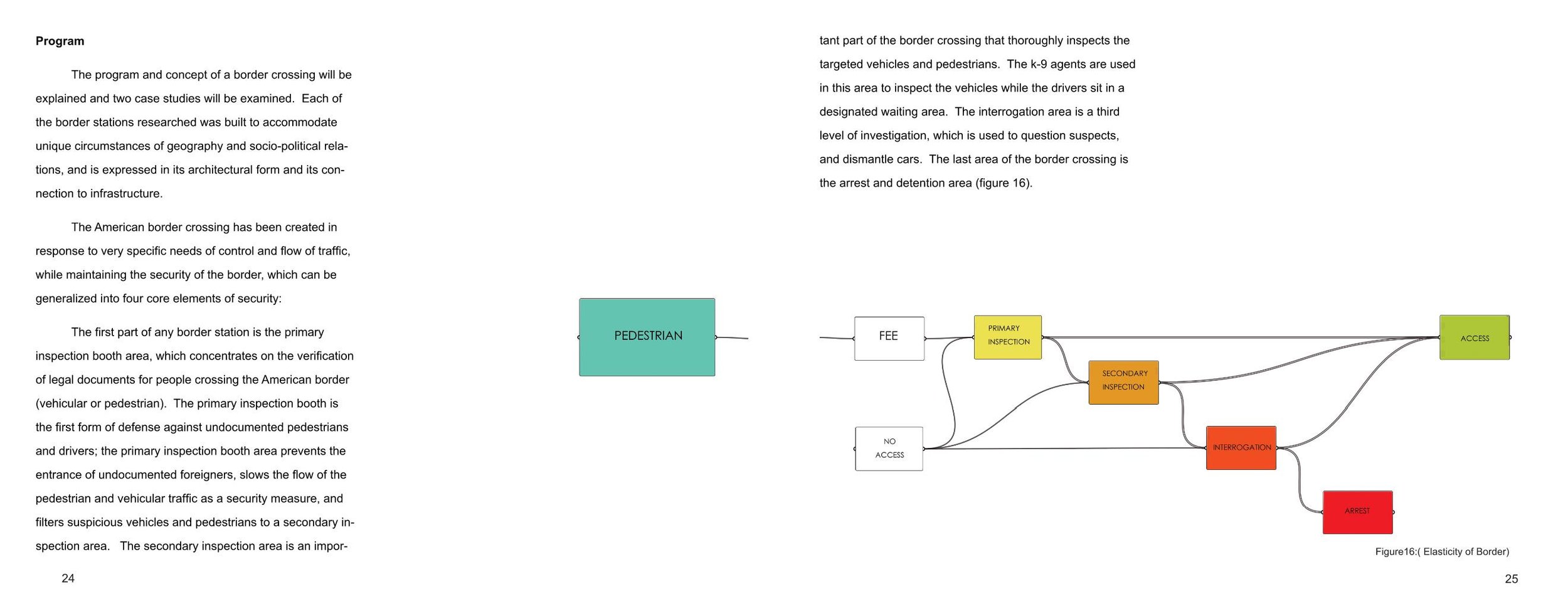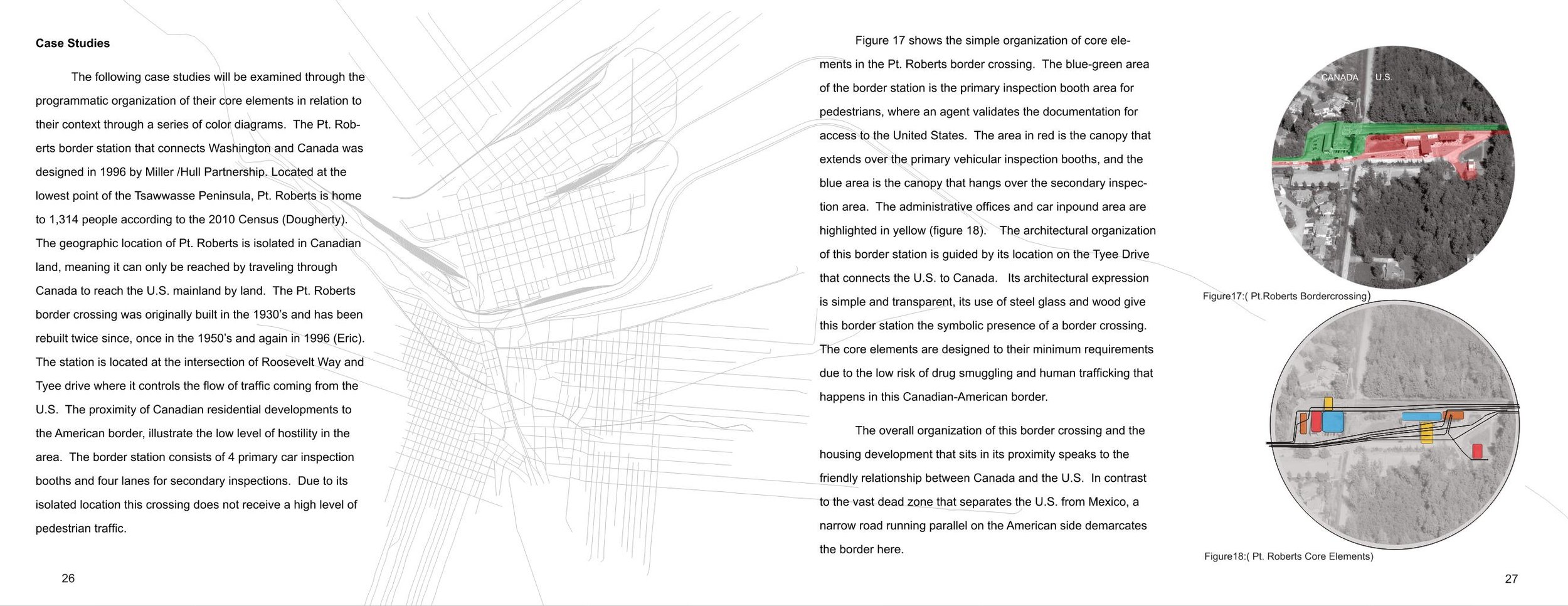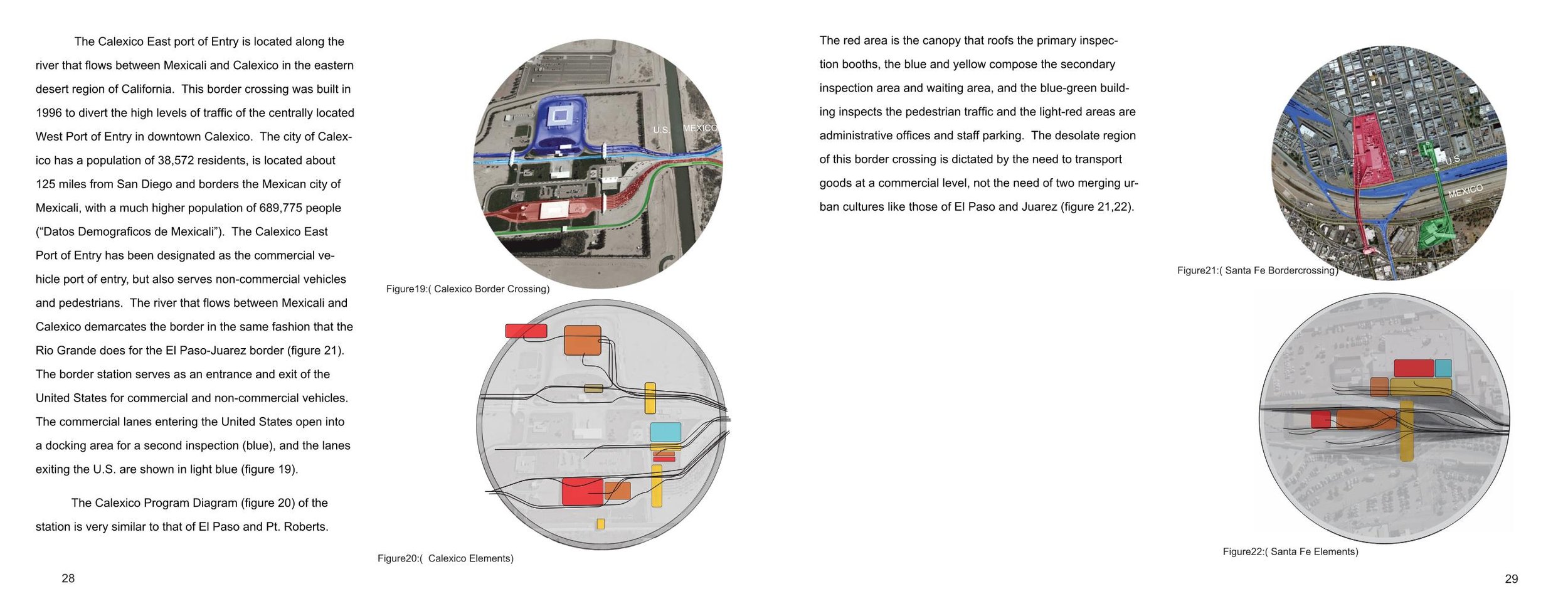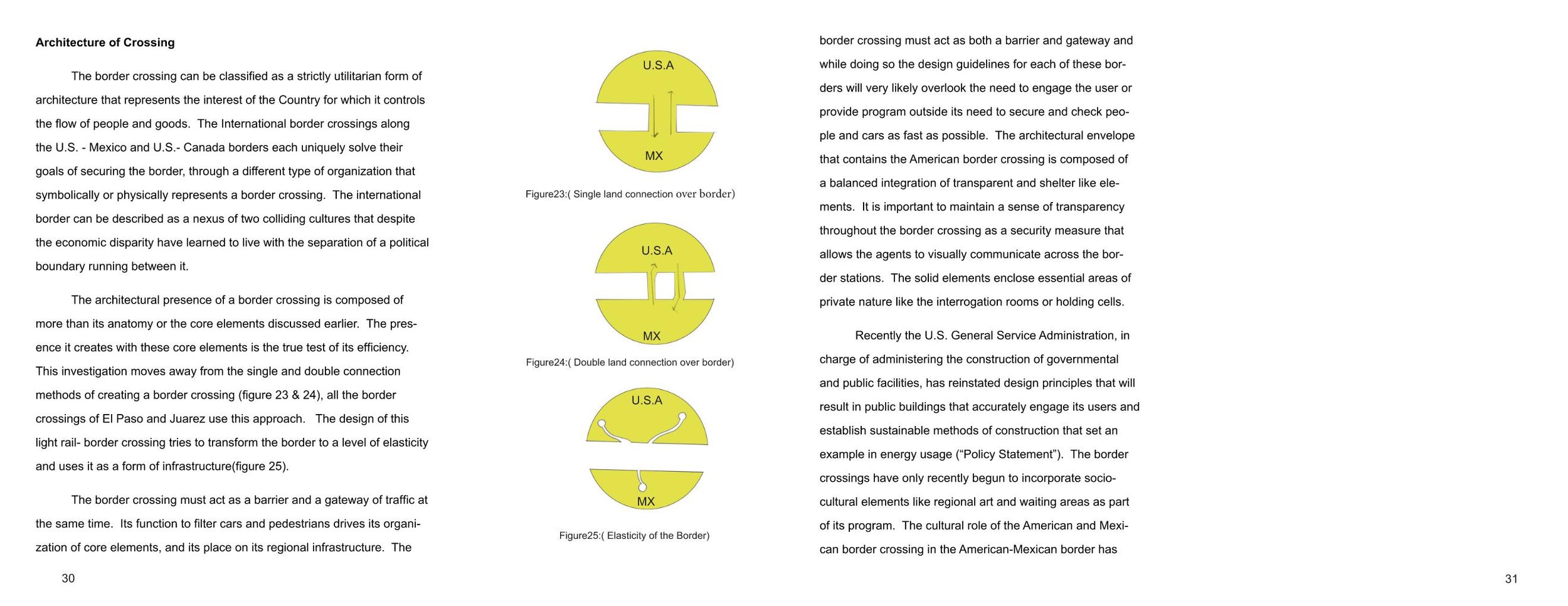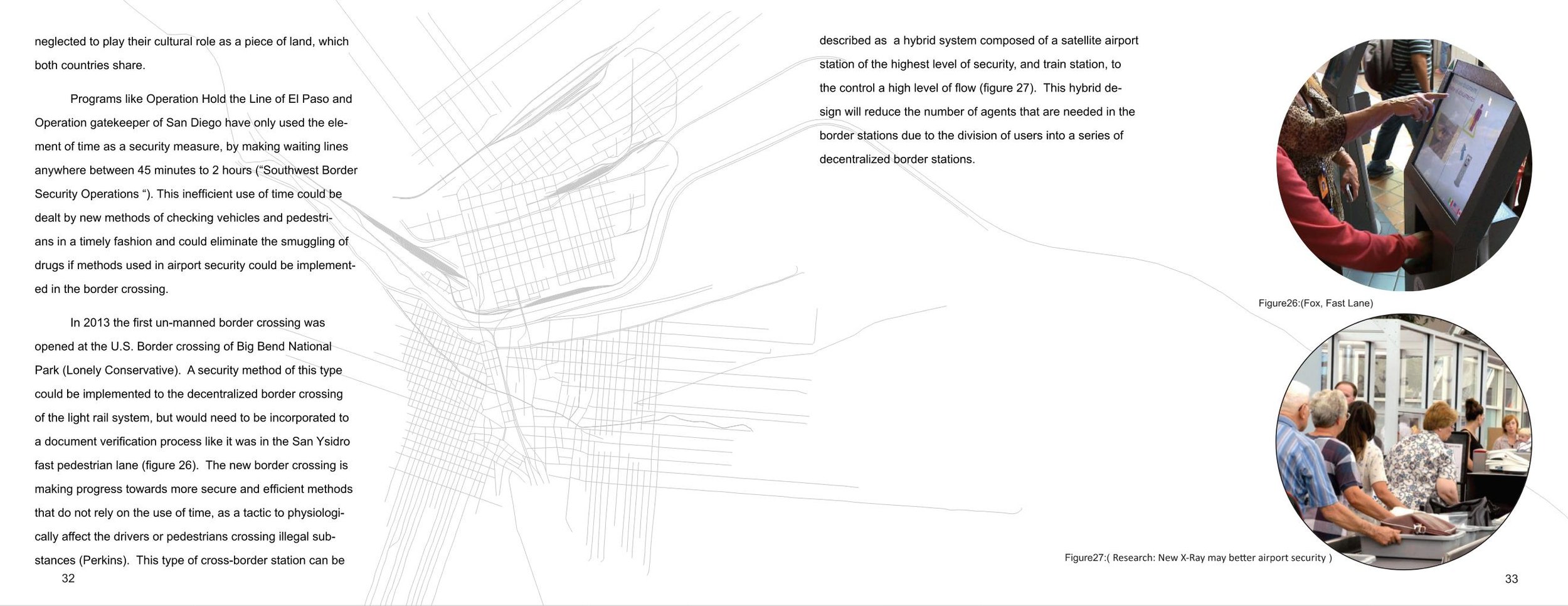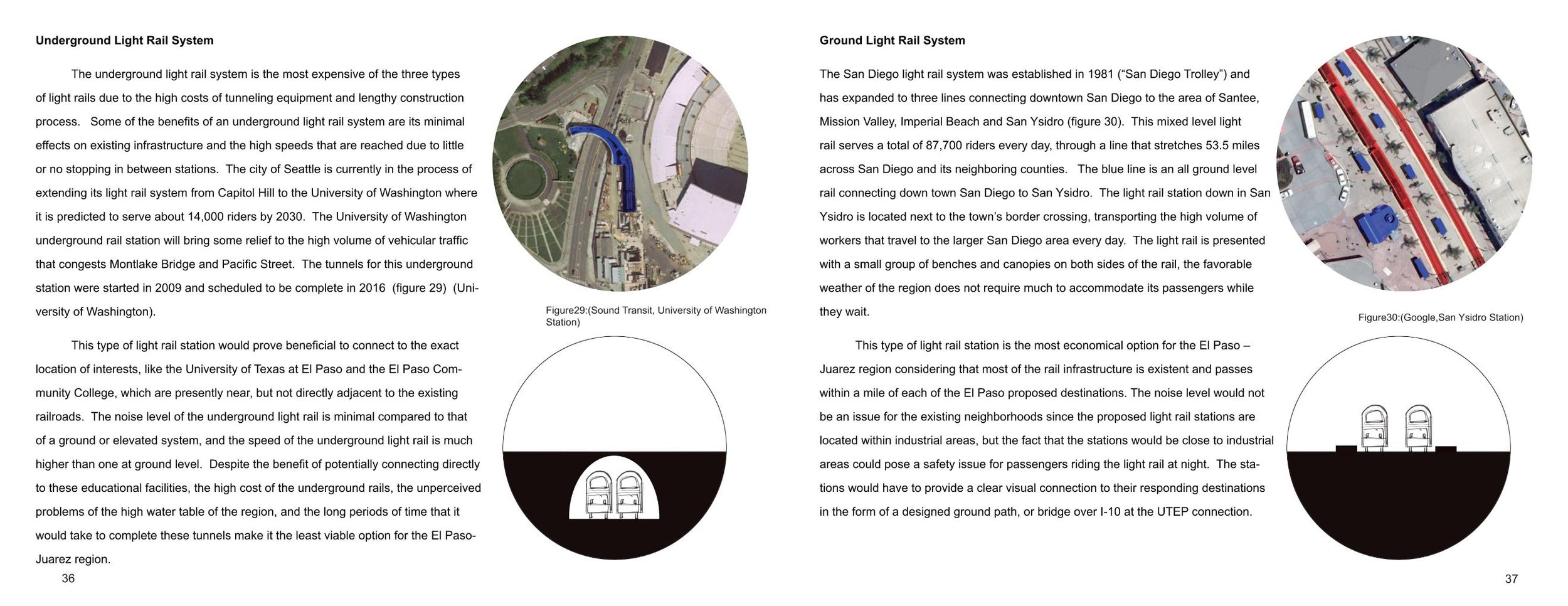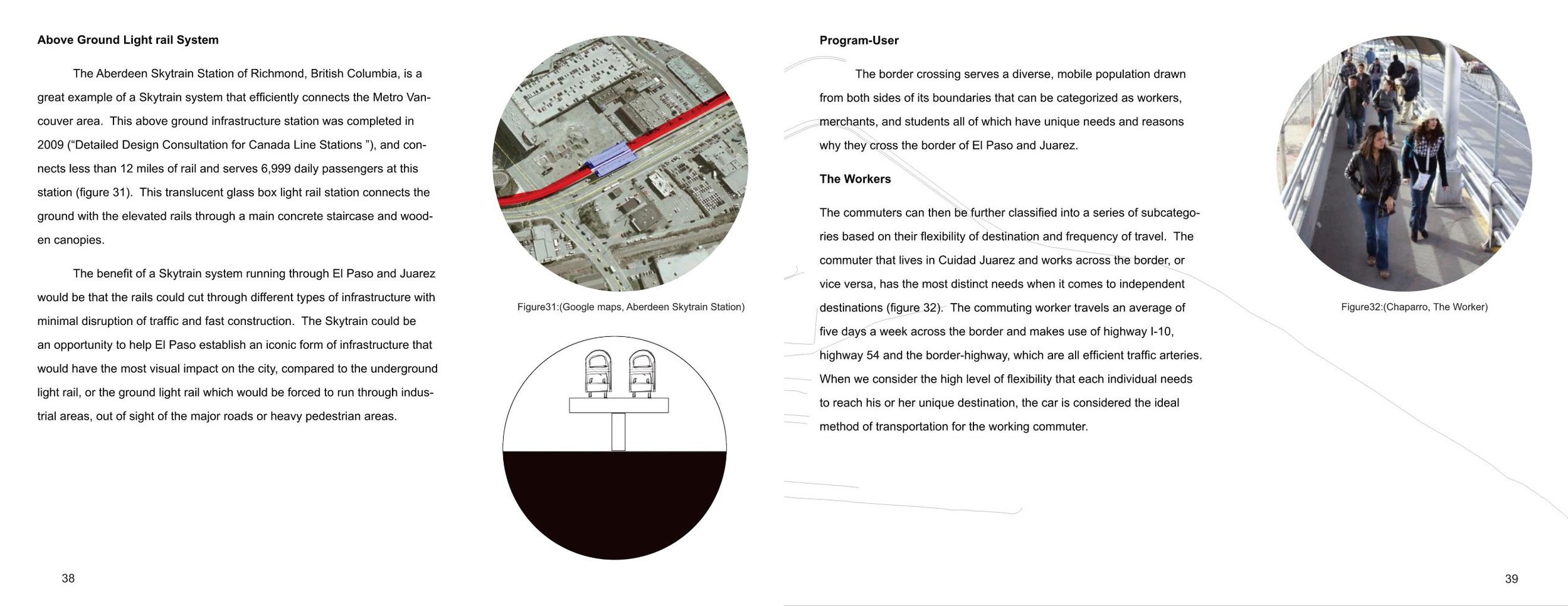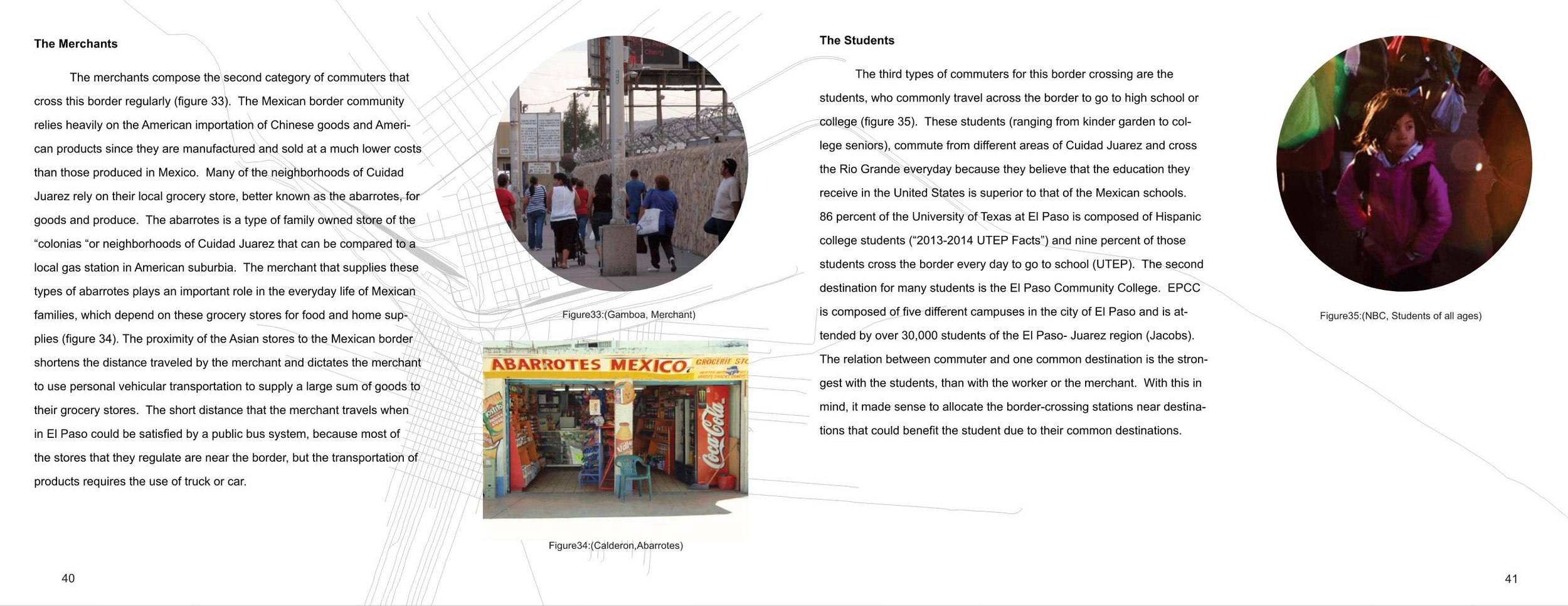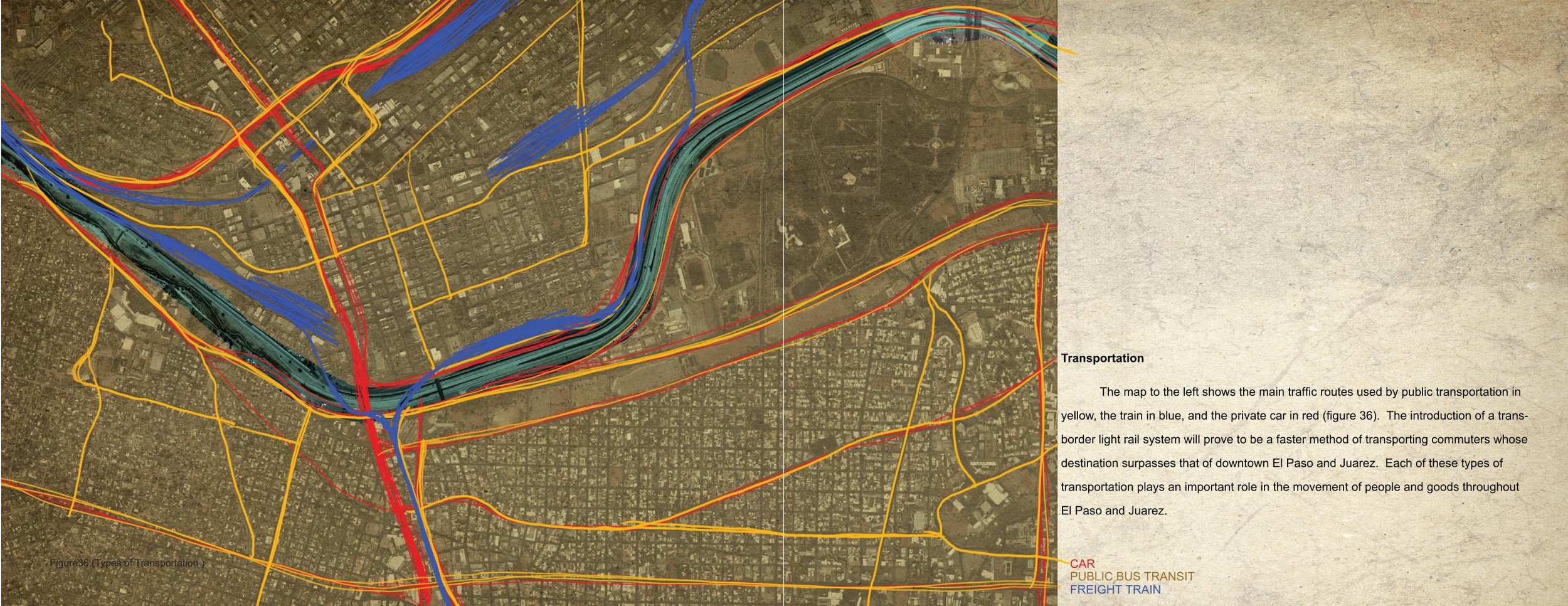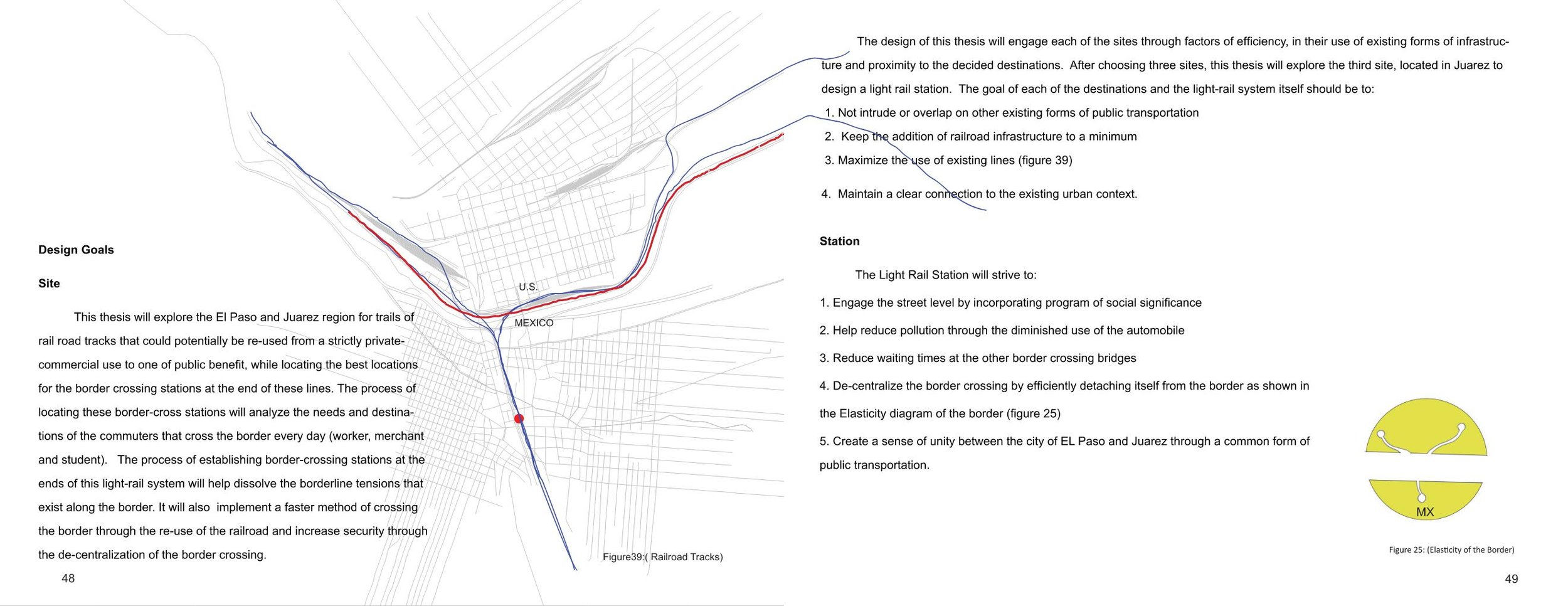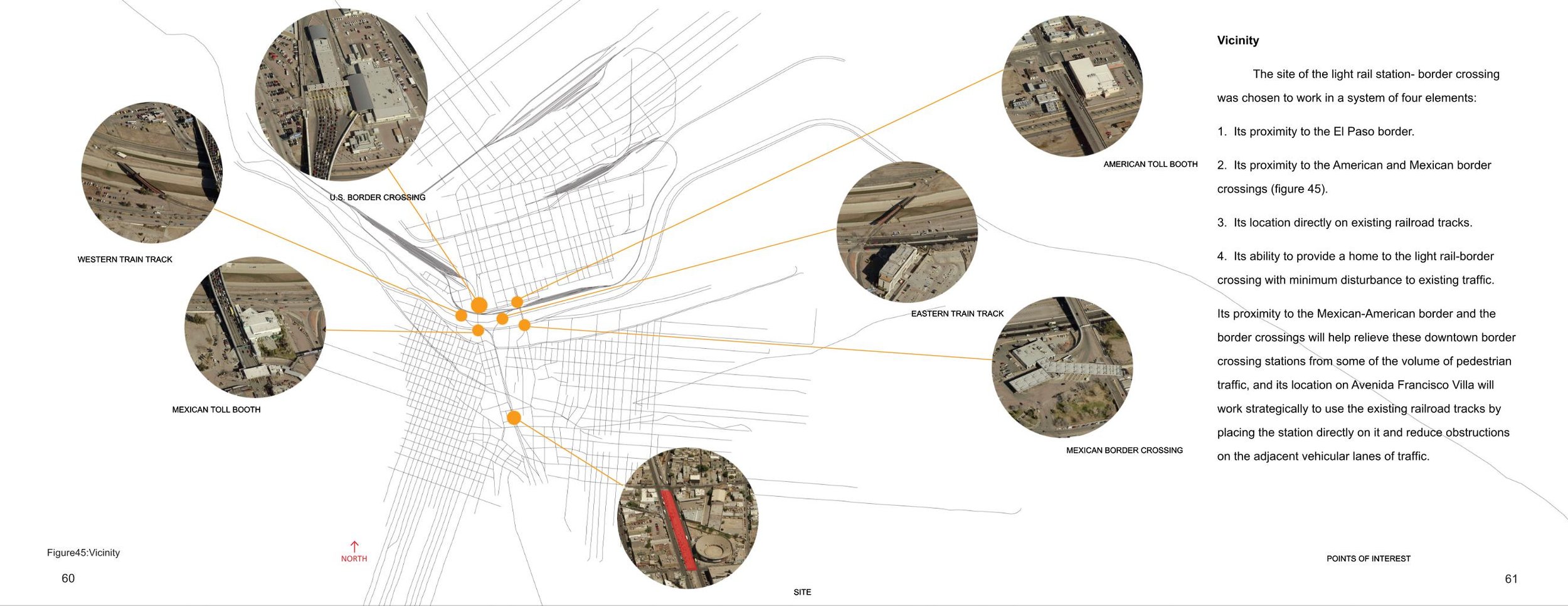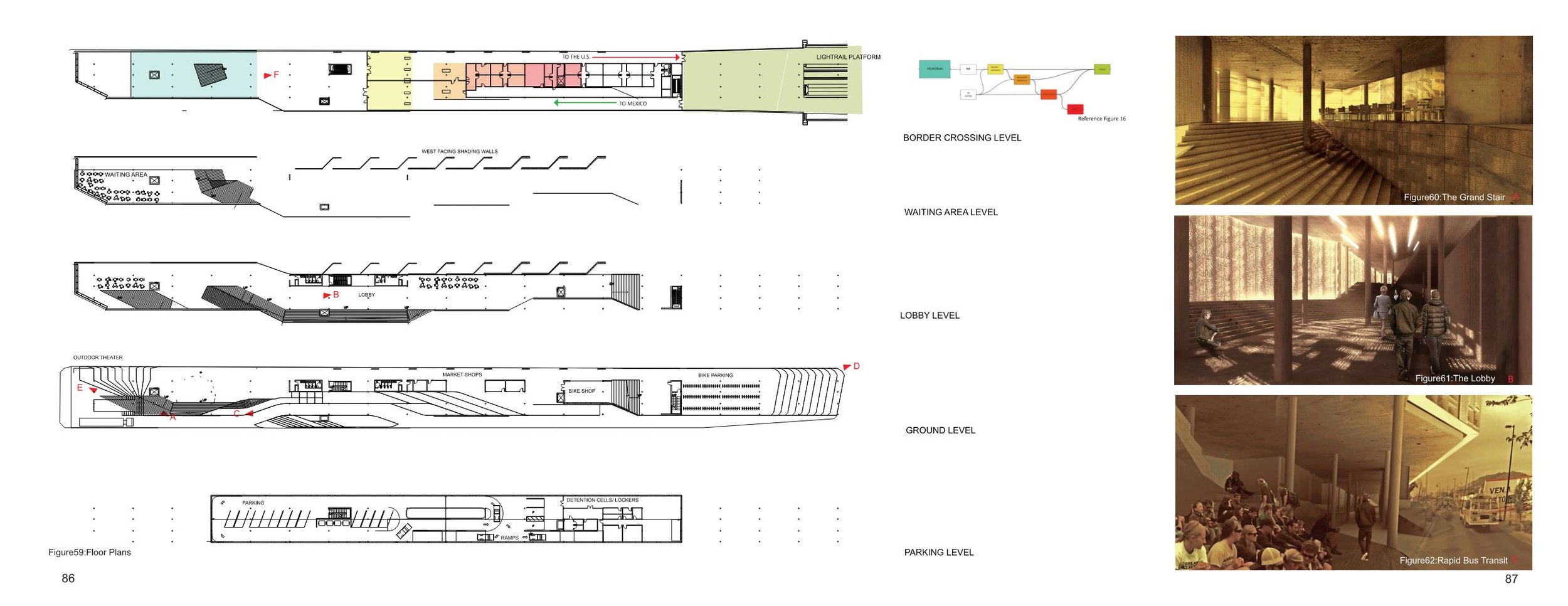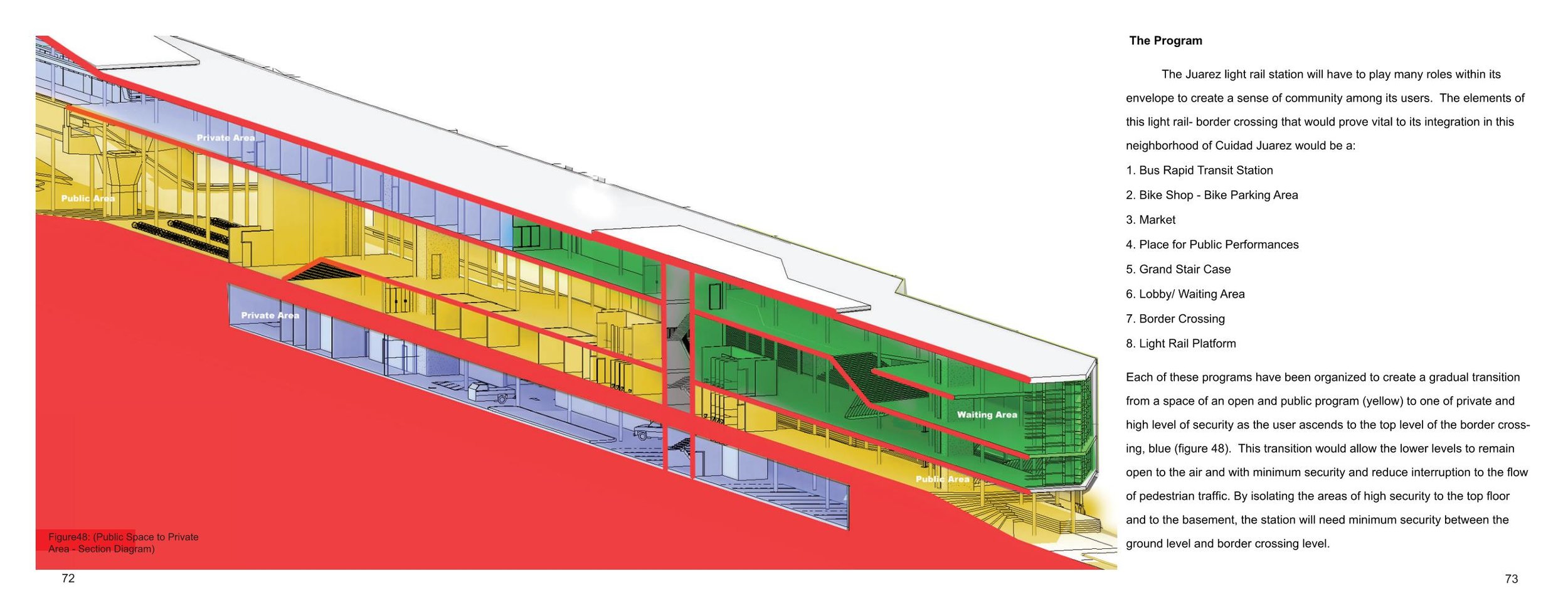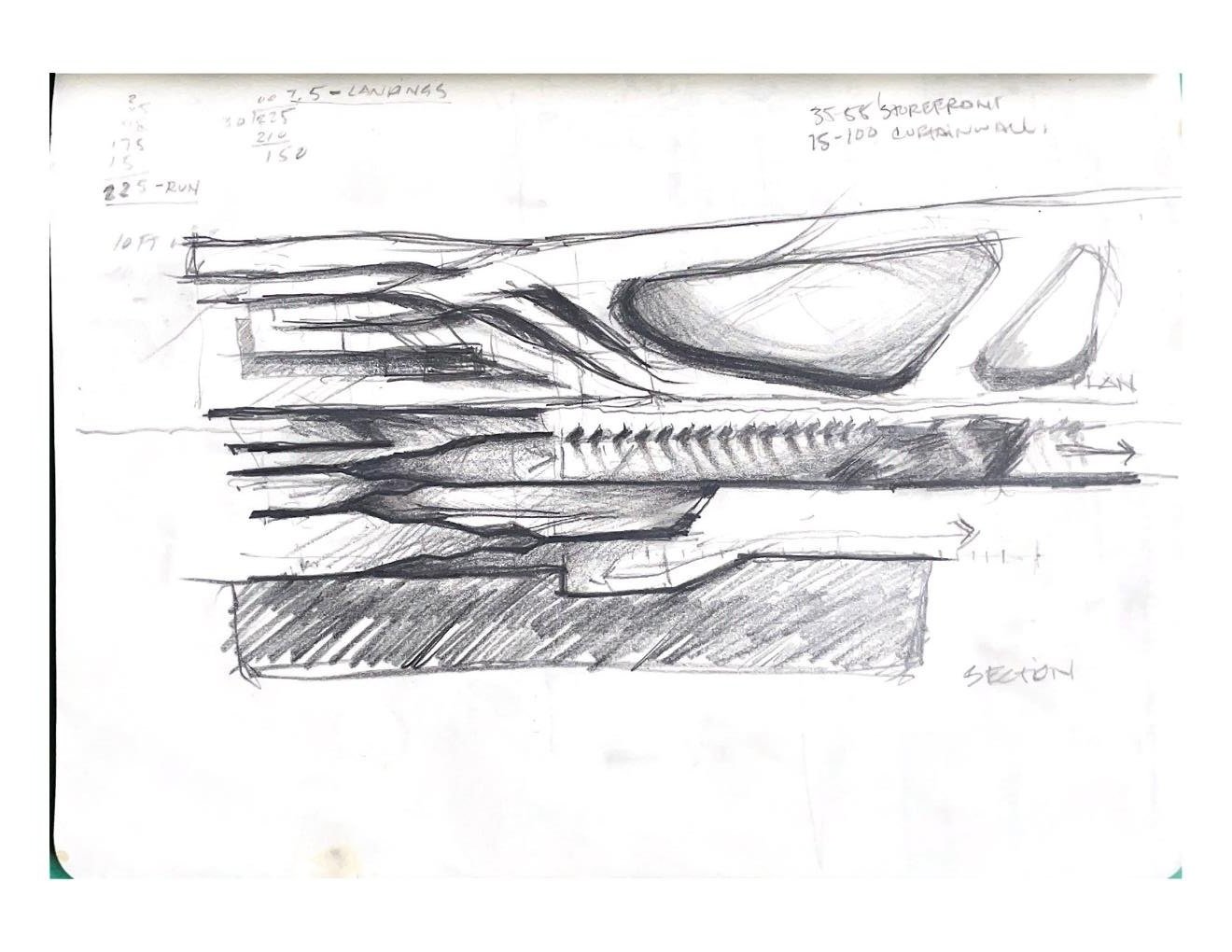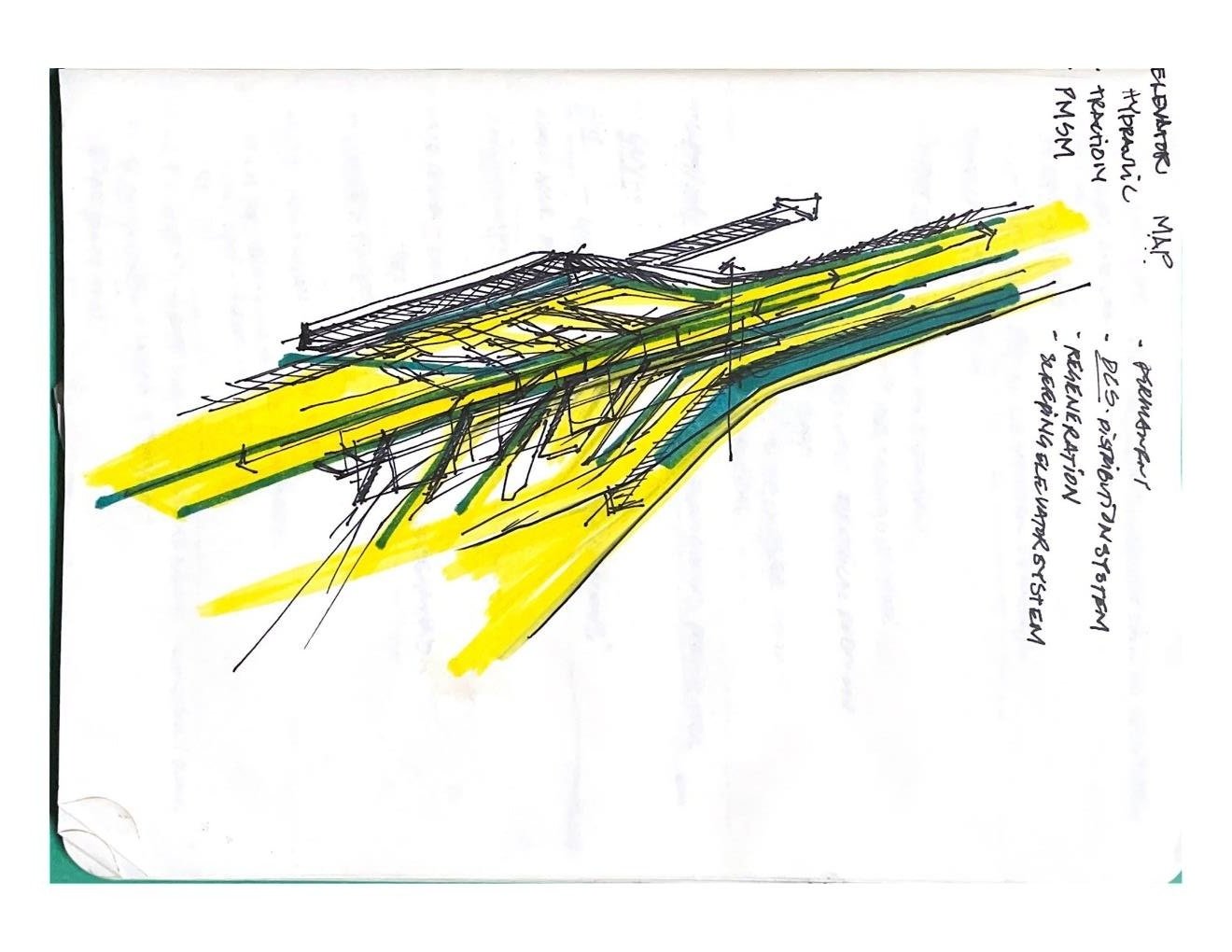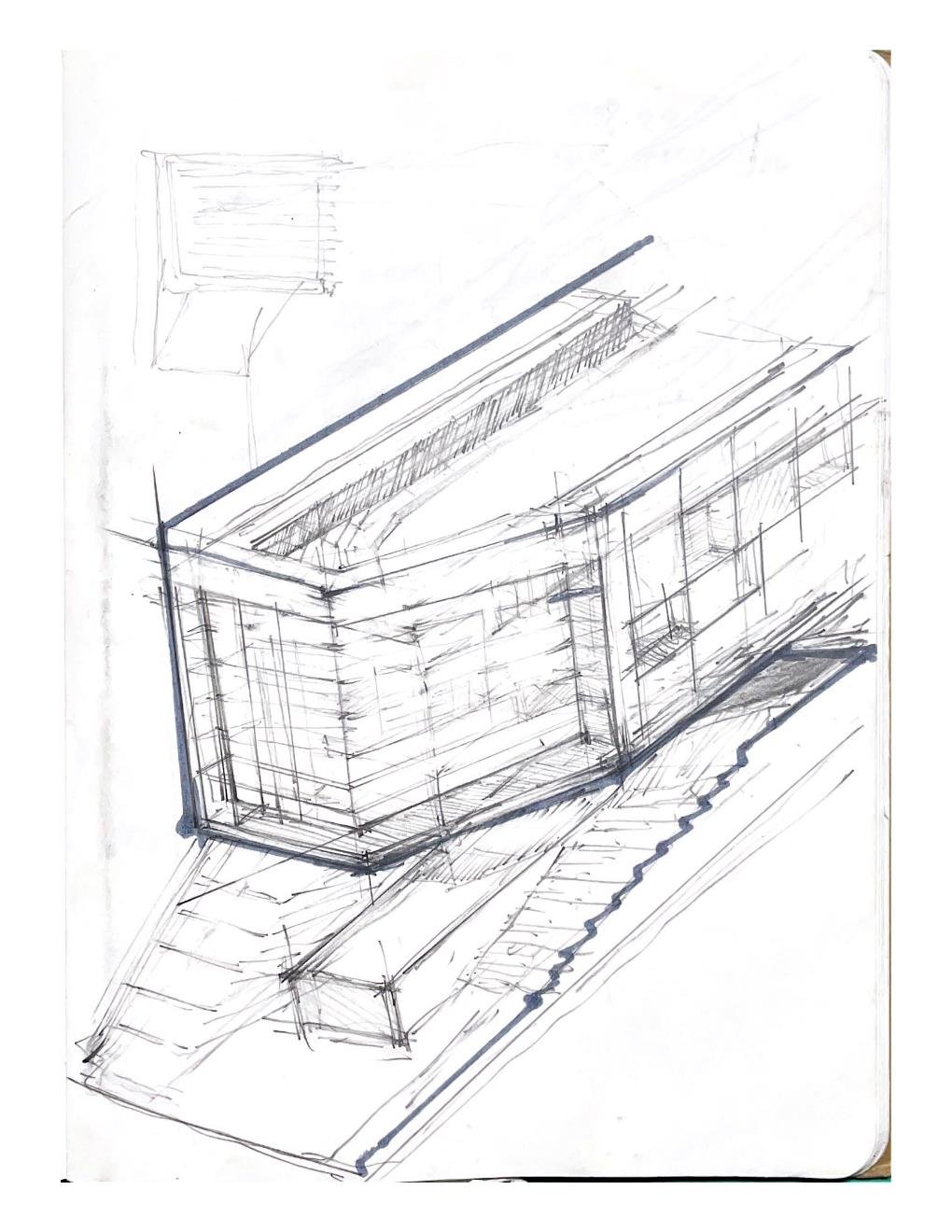TRANSBORDER LIGHT-RAIL SYSTEM
This architectural thesis proposes a visionary light rail and border crossing facility nestled in Ciudad Juarez, designed to enhance pedestrian mobility and safety across the El Paso-Juarez region. Integrating cutting-edge design with efficient transit solutions, the facility aims to streamline border crossings, fostering cross-border connectivity and cultural exchange. Through innovative architectural principles, the project seeks to prioritize pedestrian experience, creating a welcoming, secure environment for travelers. By facilitating faster, safer border crossings, the thesis envisions a transformative urban infrastructure that strengthens regional ties and promotes economic vitality, while celebrating the shared heritage and diversity of the El Paso-Juarez community.
This de-centralized border crossing proposed here is strategically located in a dense area of Cuidad Juarez. The El Paso-Juarez commuter typically spends 2 hours in line to cross the border at peak hours. This project proposes to shorten wait times, tap into existing public transporation and increase safety at the border. This light rail / border Crossing is located in direct proximity to a bull fighting stadium (A), an un-used parking garage (B), a once popular business district (C), and adjacent vacant areas for future housing development. The site is currently used by a bus route that runs through the site, a bike lane and an existing railroad, that sits between two vehicular traffic lanes on each side that are used by drivers on the way to the Santa Fe Bridge border crossing.
The site of the Juarez Border-crossing station is 60 feet wide and 800 feet long, strategically located on the intersection of Avenida Francisco Villa and Calle Abraham Gonzales. Avenida Francisco Villa runs perpendicular to the American border and is a direct path to the El Paso border from the southern area of Juarez. This highly trafficked route is part of the “Rutas” or public bus system, a two-way bicycle lane, pedestrians walkways, trains and vehicular traffic, all in the matter of 120 feet. This unique road has created a highway of multiple forms of transportation, allowing them to coexist despite the proximity of one to the other. Avenida Abraham Gonzales was chosen as the intersection road because of its proximity to Avenida 16 de Septiembre, which is one of the fastest ways to connect the eastern rural areas of Cuidad Juarez to its downtown area. This site will provide a unique opportunity to explore the architecture of border crossings, as a filtering system through which different types of transportation pass and help commuters pass through borders efficiently. The challenges of this site will lie in its linear nature, which has little ground to spare without interrupting the bicycle and bus lanes. A challenge of this site will be to maintain the flow of different forms of vehicular movement, while imposing various levels of control. A third and final challenge of this site will be in its ability to securely and quickly transfer passengers without interrupting the traffic flow of pedestrians, cyclists, and buses.
Information
Location
Cuidad Juarez, CHI Mexico
PUBLIC TRANSPORTATION DIAGRAMS

